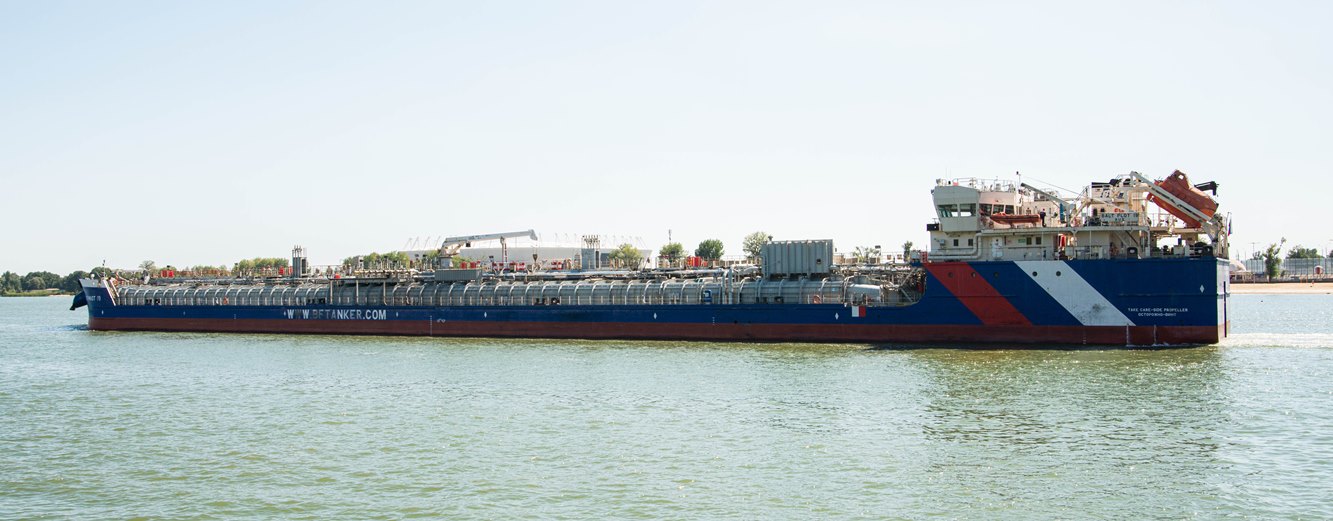
In almost 10 month of the year, cargo turnover on inland water ways of the Azov-Don Basin decreased by 1 million tonnes versus the same period of 2020. Transportation of agricultural goods and sulphur has reduced by almost a half with the decrease demonstrated by other types of cargo as well.
From the beginning of the navigation season and up to 20 October 2021, 7.5 million tonnes of cargo was transported by inland water ways of the Azov-Don Basin. In the same period of the previous year it was 8.5 million tonnes with the total result of 202 as high as 10.3 million tonnes.
“One of the reasons behind the decrease is insufficiently intense shipping. In the navigation season of 2021, we registered 1,200 less calls and we can't help being concerned by that. We return to the level of 2015 when the Don river was shallow and the cargo base was lost”, — Aleksandr Salnikov, representative of Azov-Don Basin IWW Administration, said at the transport and logistics conference “Russia’s Inland Transportation 2021”.
In the Azov-Don Basin, transportation of oil products accounts for 54.5% of the total turnover and makes 4.067 million tonnes, dry cargo – for 45.5%, or 3.389 million tonnes. Transit from north to south is the key direction accounting for 78.1% (5.826 million tonnes).
“Cargo batches are formed in other basins which also affected the results of 2021. The situation was not favorable from the very beginning. Volga became ice free very late, in mid-April, and shipments were poor from the very beginning of the navigation season”, says Aleksandr Salnikov.

One of the traditionally strong segments in inland shipping is transportation of agricultural goods.
The flow of agricultural goods decreased by almost a half and made 1.292 million tonnes (versus 2.387 million tonnes a year ago). That should be particularly attributed to reduction of shipments from Volga and Kama.
Transportation of chemical cargoes including sulphur and fertilizers also decreased from 468,000 tonnes in 10M’2020 to 345,000 tonnes in 10M’2021 (down 26.2%, year-on-year).
Sulphur volumes sank by a half. “Our major carrier of sulphur, Volga Shipping Company, stopped shipments of this product from August 4 and we do not know the reason behind that”, said Aleksandr Salnikov.
Year-to-date results of the Azov-Don Basin include 4.067 million tonnes of oil cargo and dangerous goods, 398,000 less than in 2020. Rosneft’s shipments from Samara, Saratov, Syzran and Kashpir to port Kavkaz fell by 171,000 tonnes (total turnover – 2.592 million tonnes). Meanwhile, Lukoil’s shipments from Tatyanka to Kavkaz rose by 348,000 tonnes to 883,000 tonnes.
“In the segment of liquid bulk cargo and dangerous goods, the increase was only shown by heavy fuel oil and crude oil. Other types of cargo (vacuum gasoil, diesel fuel, petrol and diesel oil) demonstrated a considerable decrease versus the previous year”, sums up the speaker.
As for aggregates (crushed stone), its turnover rose by 31% to 288,000 tonnes.
Transportation of metal products (metal, metal scrap and pipes) saw a two times fall and totaled 140,000 tonnes shipped by Volga and Kama to the ports of Turkey and Romania. Last year it totaled 273,000 tonnes.
The Federal Azov-Don Basin Administration is responsible for management and control of inland waterways of the Don River from the lower access channel of Lock No 15 (Tsimlyansk Reservoir) to the village of Aksai (the 3121-km stretch of the Don), except for Nikolayevsky and the Konstantinovsky hydroengineering facilities, and the tributaries of the Don River, Seversky Donets (from Krasny farm to the mouth) and the Manych River (from the Novo-Manychskaya Dam to the mouth). The total length of the Azov-Don Basin Administration managed inland waterways reaches 691.3 km.
 By Kristina Tkacheva
By Kristina Tkacheva
tkacheva.k.v@mail.ru
More industry-related content is available on our social media pages: FaceBook, YouTube, Telegram, Twitter, Yandex Zen



